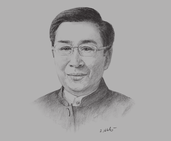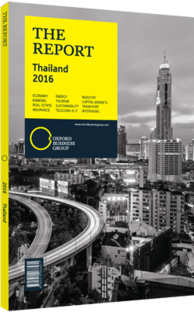Arthit Ourairat, President, Rangsit University: Interview

Interview: Arthit Ourairat
How ready is Thailand’s higher education system for the increased labour competition presented by the ASEAN Economic Community (AEC)?
ARTHIT OURAIRAT: Thailand is moving in a positive direction in terms of gearing its youth towards the AEC. In fact, it is not only the AEC that we have to prepare our youth for, given that the world community is more connected and truly borderless than ever before. Universities are actively engaged with internationalisation, with many offering bilingual education as well as “ASEAN isation” programmes such as “Passage to ASEAN”, which is also offered to the public as a massive open online course free of charge. Such programmes consist of cross-cultural learning and trips to partner universities in all 10 ASEAN countries.
Thailand is one of the leading countries in the world in offering programmes in English at all levels, and I believe we will see a clear shift in terms of language and cross-cultural competency in as short a time-frame as five to 10 years. Besides providing curricula and training for university students, institutions of higher education have started to collaborate with high schools in order to share resources and knowledge at an earlier level. We are making progress, and it is just a matter of time before we see the difference.
To what extent is the demand for courses and degrees being driven by public and private sector labour needs in new industries?
OURAIRAT: Thailand has experienced demand and enrolment growth as a whole from both domestic and international students. There exists industry demand in new disciplines in the country in many varied fields, including railway engineering, innovative agriculture, radiology, commercial aviation, political and social sciences, and health care. As we experience shifts in the industries that are currently driving economic growth and will continue to do so in the future, that influence is directly felt in terms of demand for graduates. Moreover, we are also witnessing vertical growth, meaning higher demand for education at the master’s and doctoral level.
How can Thailand avoid a brain drain if a large portion of its top graduate students want to pursue further education overseas?
OURAIRAT: This situation exists, but I think it is getting better in terms of retaining the top graduate students to study domestically. Higher education in Thailand is currently equipped with highly qualified professors, a great number of whom have national and international experiences with real-world or industrial linkages and connections. The curriculum and facilities offered in Thailand are increasingly on par with those in international institutions, and more and more programmes are pursuing international collaboration, joint research and even double and joint degrees.
I believe that an increasing number of students will continue their academic pursuits domestically with increased intra-regional mobility, and in fact we have already been seeing inbound mobility from new countries as the concept of Asianisation takes hold.
How do you assess the level of government funding and incentives for research and development (R&D) activity at private universities?
OURAIRAT: I wish that private universities in Thailand could receive the same levels of support as state universities do, in terms of both government funding and incentives for R&D activity. In my view, it does not matter whether the institution in question is public or private, inasmuch as both kinds are looking to contribute to the benefit of the country and of global society. Education is certainly a public good and a public service that governments are supposed to provide to their citizens, and since private universities share this responsibility, I believe they should be entitled to equal levels of support from the government.
You have reached the limit of premium articles you can view for free.
Choose from the options below to purchase print or digital editions of our Reports. You can also purchase a website subscription giving you unlimited access to all of our Reports online for 12 months.
If you have already purchased this Report or have a website subscription, please login to continue.

